Diptera.info :: Identification queries :: Other insects, spiders, etc.
Page 1 of 2: 12
|
|
Neotropical Hymenoptera
|
|
| ChrisR |
Posted on 01-12-2007 18:39
|
|
Super Administrator Location: Reading, England Posts: 7706 Joined: 12.07.04 |
The recent influx of neotropical photos in the Diptera side prompted me to dig out these photos of a sphecid(?) which seems to be mimicing a Pepsis wasp - but I'm not sure if my indentifications are even close - or why it might want to look like a Pepsis. Location: French Guyana.
ChrisR attached the following image: 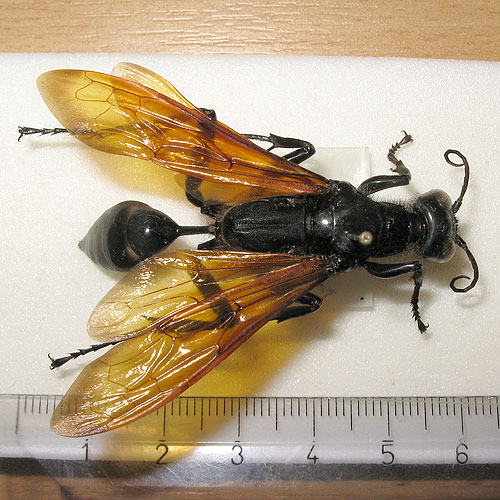 [80.55Kb] Edited by ChrisR on 02-12-2007 17:38 |
| ChrisR |
Posted on 01-12-2007 18:40
|
|
Super Administrator Location: Reading, England Posts: 7706 Joined: 12.07.04 |
and now the Pepsis...
ChrisR attached the following image: 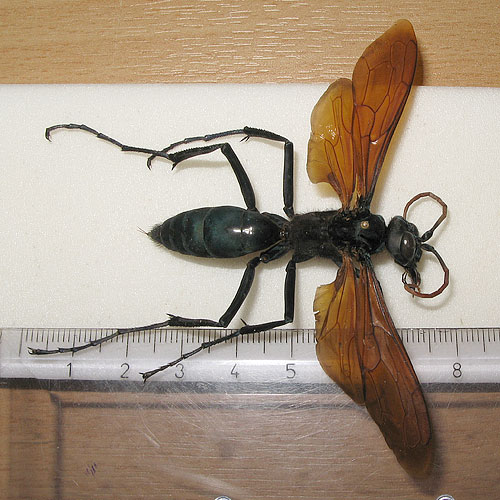 [68.83Kb] |
| ChrisR |
Posted on 01-12-2007 18:41
|
|
Super Administrator Location: Reading, England Posts: 7706 Joined: 12.07.04 |
and now a completely gratuitous euglossine bee 
ChrisR attached the following image: 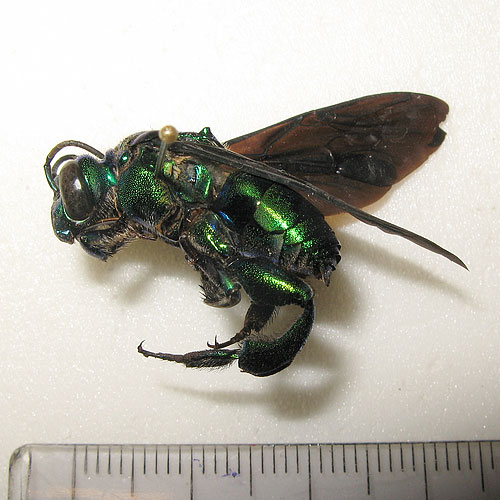 [56.78Kb] |
| jorgemotalmeida |
Posted on 01-12-2007 18:44
|
|
Member Location: Viseu - PORTUGAL Posts: 9296 Joined: 05.06.06 |
big and spectacular insects.  the last one I leave that for fun.  I know what it is ... and when you know about the right family you will be baffled! I'm sure! I know what it is ... and when you know about the right family you will be baffled! I'm sure! |
| cthirion |
Posted on 01-12-2007 18:50
|
|
Member Location: Awirs (Flémalle) Belgique Posts: 901 Joined: 13.08.04 |
Photo Three Apoidea
Edited by cthirion on 02-12-2007 11:37 cthirion |
| ChrisR |
Posted on 01-12-2007 19:10
|
|
Super Administrator Location: Reading, England Posts: 7706 Joined: 12.07.04 |
Another specimen at a different angle... (and yes, I will side-pin anything  - note the steep angle of the pin to avoid damaging the same surface on the other side) - note the steep angle of the pin to avoid damaging the same surface on the other side)
ChrisR attached the following image: 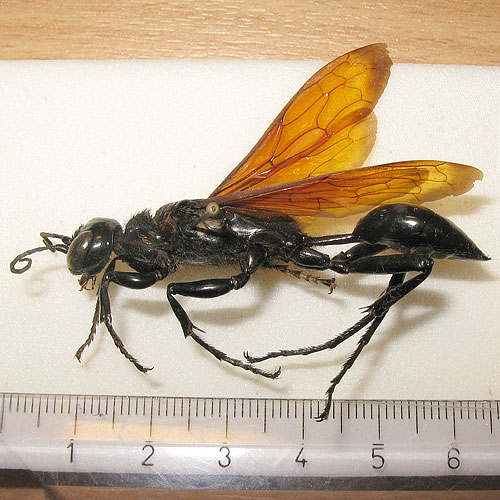 [71.58Kb] Edited by ChrisR on 01-12-2007 19:12 |
| Christian Schmid-Egger |
Posted on 01-12-2007 22:30
|
|
Member Location: Germany, Berlin Posts: 233 Joined: 05.08.05 |
From general aspects, the specid wasp looks like a member of the genus Chlorion (Family Sphecidae s.str.), but some details in the wing venation are different. Because I don't now the neotropical fauna so well, I cannot say more about the genus. In any case, it is a genus close to Sphex. The Pepsis is correct, and a species ID is not possbible by photo. The question of mimicry is interesting, because both species can sting and defend themselves. So the question is which one will imitate the other one. Regards, Christian |
| ChrisR |
Posted on 02-12-2007 00:40
|
|
Super Administrator Location: Reading, England Posts: 7706 Joined: 12.07.04 |
Thanks Christian - glad I wasn't too far by saying 'sphecidae'  The mimicry thing puzzled me too - unless it it just M?llerian mimicry in action ... two harmful species evolving towards a common, shared pattern that all predators understand. Do you know how Pepsis spp. can be identified to species? Last time I investigated I was told they were nearly impossible  I have a lot of different pompylid wasps here from French Guyana and it would be nice to get some kind of name for them. Most are very different from normal "Pepsis" (see below): I have a lot of different pompylid wasps here from French Guyana and it would be nice to get some kind of name for them. Most are very different from normal "Pepsis" (see below):
ChrisR attached the following image: 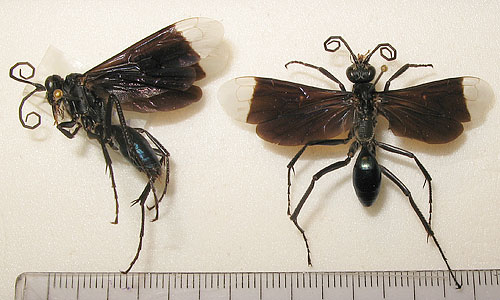 [42.6Kb] |
| ChrisR |
Posted on 02-12-2007 00:41
|
|
Super Administrator Location: Reading, England Posts: 7706 Joined: 12.07.04 |
another...
ChrisR attached the following image: 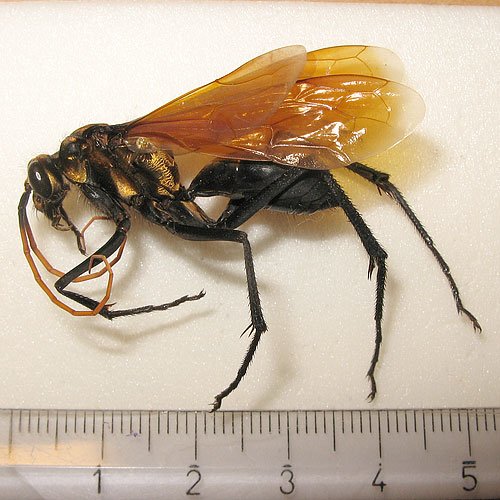 [65.65Kb] |
| ChrisR |
Posted on 02-12-2007 00:41
|
|
Super Administrator Location: Reading, England Posts: 7706 Joined: 12.07.04 |
another...
ChrisR attached the following image: 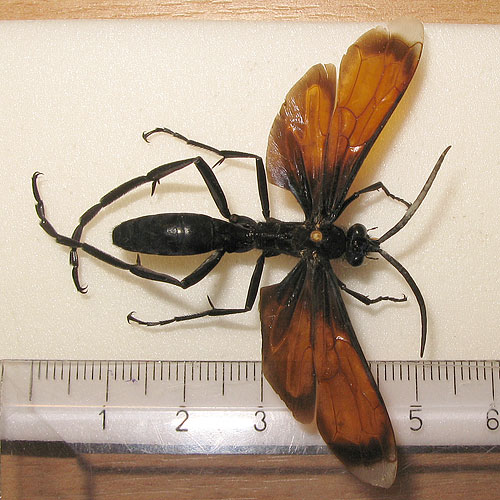 [71.8Kb] |
| ChrisR |
Posted on 02-12-2007 00:42
|
|
Super Administrator Location: Reading, England Posts: 7706 Joined: 12.07.04 |
another...
ChrisR attached the following image: 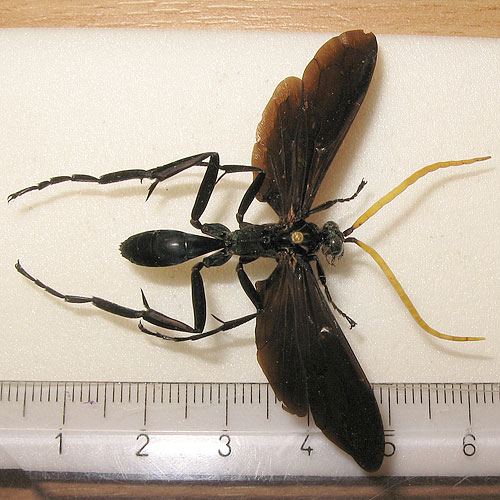 [67.86Kb] |
| ChrisR |
Posted on 02-12-2007 00:42
|
|
Super Administrator Location: Reading, England Posts: 7706 Joined: 12.07.04 |
another...
ChrisR attached the following image:  [69.86Kb] |
| ChrisR |
Posted on 02-12-2007 00:43
|
|
Super Administrator Location: Reading, England Posts: 7706 Joined: 12.07.04 |
another...
ChrisR attached the following image: 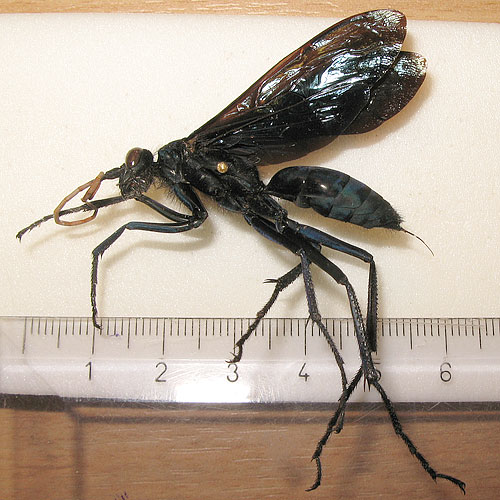 [68.83Kb] |
| ChrisR |
Posted on 02-12-2007 00:43
|
|
Super Administrator Location: Reading, England Posts: 7706 Joined: 12.07.04 |
another...
ChrisR attached the following image: 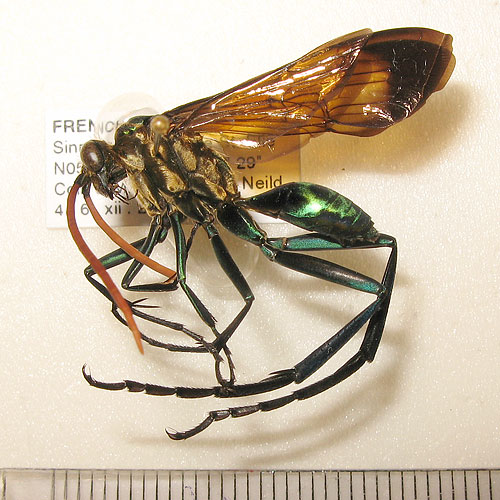 [74.75Kb] |
| ChrisR |
Posted on 02-12-2007 00:47
|
|
Super Administrator Location: Reading, England Posts: 7706 Joined: 12.07.04 |
another...
ChrisR attached the following image:  [36.35Kb] |
| ChrisR |
Posted on 02-12-2007 00:48
|
|
Super Administrator Location: Reading, England Posts: 7706 Joined: 12.07.04 |
and another really amazing sphecid  (sorry, last one) (sorry, last one)It was a pretty good holiday but tachinids were very short on the ground so I had to concentrate on Hymenoptera. I only got stung once, by a social wasp, so I probably got off lightly considering how bad pompylid stings are supposed to be 
ChrisR attached the following image: 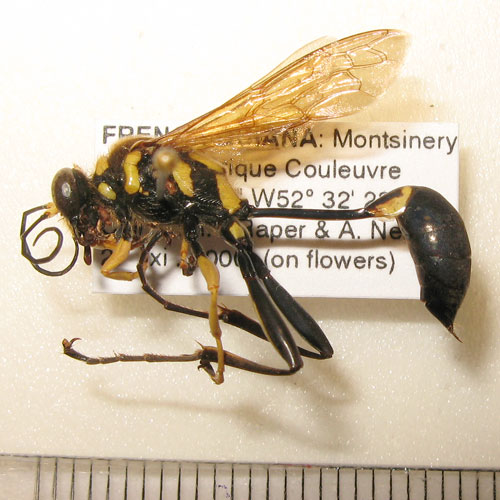 [59.98Kb] Edited by ChrisR on 02-12-2007 00:51 |
| Christian Schmid-Egger |
Posted on 02-12-2007 09:01
|
|
Member Location: Germany, Berlin Posts: 233 Joined: 05.08.05 |
Very nice specimens, and no problem with the quantity, I can look for more :-) The first Pompilid is not Pepsis (with the white, apical wing spots), the others most probable are Pepsis or the related Entypus. Specimens with strong, straight antennae are males. Nice colores, I like these neotropical species a lot. In 1987 I collected in Brasil, and also found similiar stuff. About identification: I know two specialists: Colin Vardy in London is revising Pepsis, and Raymond Wahis in Liege/Belgium is identifying all other genera in South America. Please, send me an Email, and I give the contact data. (christian at bembix.de). The last specimen is a Sceliphron (Sphecidae s.str.). Normally, species ID is possible, there is a recent world revision. Regards, Christian |
| ChrisR |
Posted on 02-12-2007 14:48
|
|
Super Administrator Location: Reading, England Posts: 7706 Joined: 12.07.04 |
Many thanks for the advice - email sent  I have studdied pompilids here in the UK so collecting them in the neotropics was a fairly high priority for me. I knew it would be very hard to identify them but just the chance to bring back specimens from this relatively under-collected country was too important to miss. The sphecids were more difficult to find but I have a few of these black & yellow ones and they were some of my favourites. I will post some more images later, if no-one objects  Edit: I have had a quick look at Sceliphron in Google and I agree they look very close. The fact that they are mud-daubers is also significant because my specimens were mainly collected as they came in to collect mud around shallow puddles on roads 
Edited by ChrisR on 02-12-2007 14:51 |
| Christian Schmid-Egger |
Posted on 02-12-2007 16:18
|
|
Member Location: Germany, Berlin Posts: 233 Joined: 05.08.05 |
There is a nice site about American Pompilids with a key to genus level. But, key is difficult, I did not succeed with some nice specimens from Chile :-( http://www.biology.usu.edu/labsites/pompilidweb/default.htm More later and by Email, Regards, Christian |
| Kahis |
Posted on 02-12-2007 16:21
|
|
Member Location: Helsinki, Finland Posts: 1999 Joined: 02.09.04 |
Chris Raper wrote: I probably got off lightly considering how bad pompylid stings are supposed to be  I got stung by an European one, a small one. It was bad enough. Owie owww! Fortunately the blinding pain lasted only for 5 seconds or so. Can't image what a bigger dose of the same medicine would do. I'd rather be kicked in the family jewels 
Kahis |
Page 1 of 2: 12
| Jump to Forum: |













